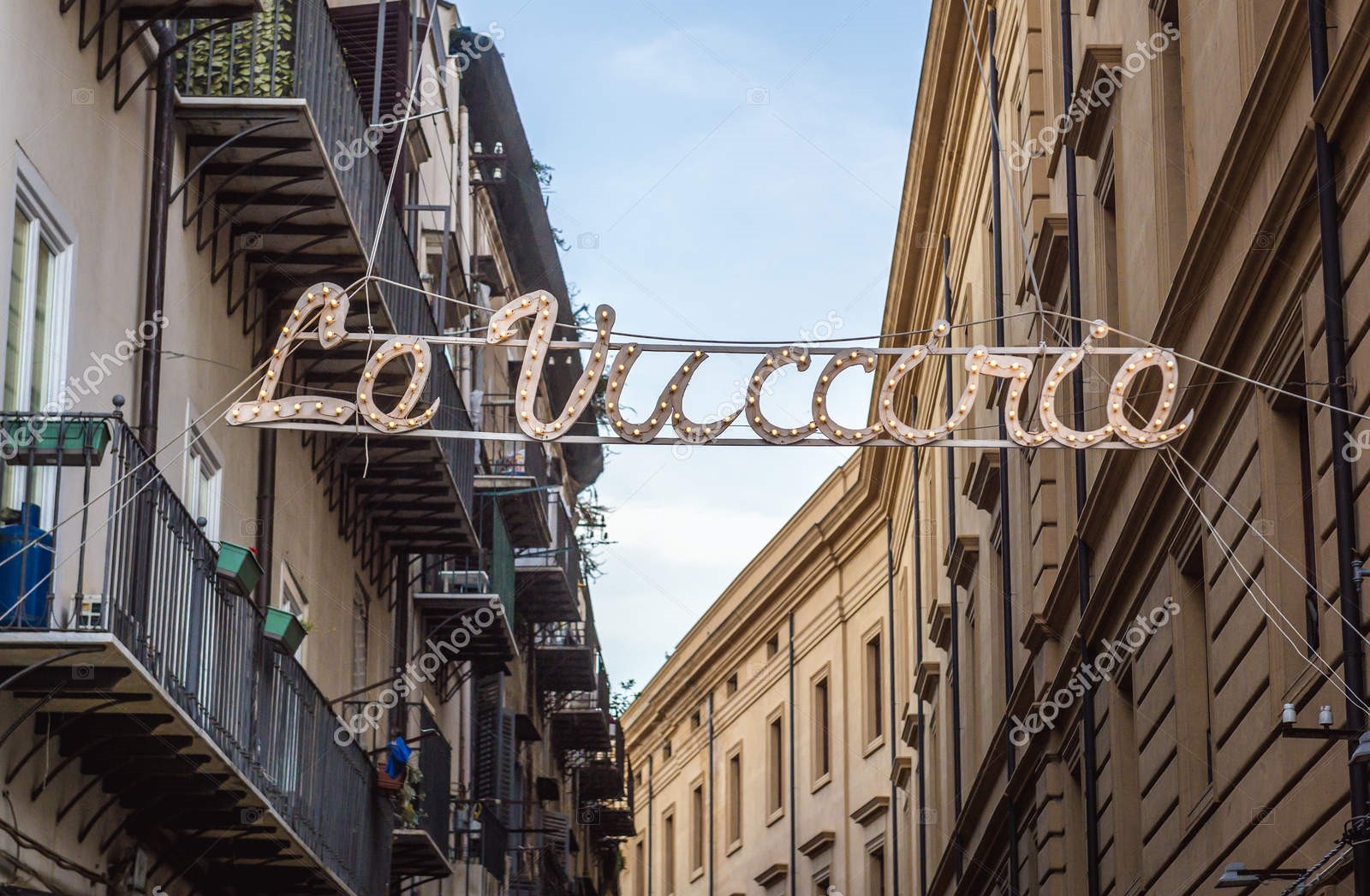Moving through the streets of the markets is a unique experience, recognising the products, choosing them and understanding which are the best dishes to taste and discovering their secrets is not always easy.
Cookinshow organises show cooking lunches and dinners in the comfort of your holiday home! In just two hours, a local food guide will show you typical dishes and products from the historic markets, tell you about their recipes, secrets and historical and cultural references, and provide you with a map of valuable tips on how to get around the market stalls and the city of Palermo like a real local”. Cookinshow is a portal to unique experiences and tastings for your trip to Sicily.
Origins:
The origin of Palermo’s popular markets dates back to the period of Arab domination and therefore resembles the oriental markets (Suk). Along the streets there are stalls and wooden boxes to display the goods, which are advertised by the vendors with the ‘abbanniata’ (a chant that explains the good quality and good price of the products).Another feature that makes it similar to the Suk markets is the merchandise on display: meat hung outside the shop (a Jewish custom to cleanse the animal of its blood), as well as fish, fruit and vegetables.
The Ballarò market dates back to the period of Arab domination. The Arabs occupied Sicily in the year 827 AD and made the island Islamic by dividing it into three valleys: Val Demone, Val di Noto and Val di Mazara. They occupied Palermo in 831 AD, calling it Balarm and making it the capital of the Arab Emirate.
Ballarò is the city’s liveliest, most dynamic and longest market, whose name most likely derives from Balhara, an Islamic village near Monreale, where the vendors lived and who went to Balarm every day to sell their wares at Ballarò. It’s nice to go to the market because you can still see the sweets that Palermo grandmothers used to give their grandchildren as snacks: cubbàita, or almond nougat, cannellini, white, pink and blue coloured candies with cinnamon inside, Terranova carob sweets (produced in the historic Carruba candy factory located right in the heart of the market), ice cream; you can see the culinary preparations at the stalls of small restaurants.
While in the past the market area ‘died’ in the evenings, Piazza Ballarò has now become a place of youthful nightlife where it is easy to find young people gathering to sip a beer accompanied by pani ca meusa, or to visit new pubs such as Moltivolti, Arci Porco Rosso and Ballarak.
The Vucciria
This market also has ancient origins. During the Arab domination it was a popular market. In 1783, Viceroy Domenico Caracciolo, Marquis of Villamaina, ordered work to improve its appearance and imposed that it be named after his surname (Piazza Caracciolo), but the people of Palermo continued to call it Bocceria. This term may have come from the French word ‘boucherie’, meaning butcher’s shop. Here, in fact, there was a large market intended for the slaughter and sale of meat only. Later on, this market changed its sales sectors and was also called “Bocceria della foglia” because it sold different types of vegetables. The term also took on a local meaning (vucciria), meaning ‘confusion’.In the evening, ‘La Vucciria’ is populated by people of all ages, especially young people who live there to drink and eat until late at night.
The Cape Market
is also the perfect place to find culinary souvenirs, it is the reference point for street food ready to be enjoyed but on the market stalls you can also find typical products such as dried tomatoes, lupins and also capers and cucunci, spices and anchovies in oil, sardines in salt.
The main entrance to the market is through the 14th-century Porta Carini. There are many fine fish stalls: some are better than others, but the fish at the Capo is all good, fresh from the morning and brightly coloured. Fried fish, verdure in pastella, roasted squid, panelle, crocché, “rascatura”, aubergines – in short, a feast of fried food.
Moving through the streets of the markets is a unique experience: recognising the products, choosing them and understanding which are the best dishes to taste and discovering their secrets is difficult. Cookinshow organises show cooking lunches and dinners in the comfort of the traveller’s holiday home! In just two hours, a local food guide will show you typical dishes and products from the historic markets, tell you their recipes, secrets and historical and cultural stories, and provide you with a map of valuable tips on how to get around the stalls and the city of Palermo, like a real local”. Cookinshow is a portal to unique experiences and tastings for your trip to Sicily.

